The Wave In Bristol, England, is now taking bookings, here’s what founder Nick Hounsfield had to say about the construction process.

As this story goes live The Wave in Bristol, England, is currently filling up its lake with water and will soon begin the final installation of Wavegarden’s Cove technology. They hope to have surfers up and riding by sometime in November. Surf Park Central recently caught up with The Wave’s mastermind Nick Hounsfield to talk about the state of the development, the process him and his team have been through, and why developing a facility that’s accessible to everyone is one of the cornerstones of his vision.
Surf Park Central: So, Nick, you’re getting down to the wire on The Wave…it’s almost time to go surfing?
Nick Hounsfield: We’re getting really close to opening this thing. We’re going to be adding more staff over the next week weeks, and it’s really encouraging to see ticket sales so strong. It’s exciting.
It’s been a long haul, when did you first conceive of the project?
It was about 2010 when I first started to formulate an idea about creating an outdoor space, a venue, where people could exercise, relax, eat good food and try to create a community space based about being outdoors and in nature. Then it was about three or four months later that Wavegarden first released a video of their original technology. That was the eureka moment. Having been a passionate surfer for 30 or 40 years, I could see this vision bringing surfing inland and that being the centerpiece of a space where people are outdoors and exercising and in nature, that sort of thing.
Then in 2011, when Wavegarden released the technology, I’ve been on a mission ever since then. At that particular time it was quite challenging to start a venture like this, what with the global economic crisis. And the technology was still in its infancy. It’s gone through various iterations since then, obviously.
Then you have to find the land. Get the team together. And, of course, find the funding. You know, 26 million quid is not the kinda thing you find down the back of your sofa. That took a good two or three years, something like 230 or 240 meetings with potential investors until we found the perfect investor.
There’s so many moving parts, I don’t know if people understand how complicated it really is?
It’s unbelievably complicated. And I thought the complicated bit was getting us up to construction, but that now seems like a walk in the park compared to the last year. Getting the team ready and all of the challenges and opportunities that arise through that.
From 2011 to 2019, how has the technology changed that is going into your facility?
What Wavegarden has done from their initial technology and what we’re installing now is that they went back to the drawing board and designed something that would absolutely deliver on the core prerequisites that we needed—the volume of waves, the capacity of the lake, the different types of waves that it can create so that it can meet the demand that we believe is out there.
After they went back to the drawing board, they came back to us in 2016, I believe, with this new Cove design, which took all the single engineering points of failure out of the equation. It absolutely delivered quality waves across all abilities, and that then drives a business model, which is then absolutely investable in.
Suddenly you’re not having to prop up the business model with other ancillary businesses like food and beverage, accommodations or what have you.
I thought it was a really exciting technology before, then it became really real when we saw the next generation of technology. We took the investors out to see it in Spain two days after it was announced. And the investors said, ‘That’s what we’re going to put our money in, that can absolutely work.’ That was a really good moment.
It seems like focusing on a wide range of ability levels and building a community around your facility was really a driving factor?
Yeah, exactly. There are other business models out there and there are other ways in which people may want to run these destinations, but ours is very much about access for all, all ages, all abilities. Therefore, we needed a technology that was going to fit that demand.
For us here in the UK, as well as throughout Europe, the number of expert surfers is very small. But there’s a big opportunity in more of a mass market with beginners and intermediate surfers. To make this vision sing we have to get people outdoors and into nature. Surfers are already people that are into nature anyway, so what we really want to target are the people who are sitting on their sofas and watching TV, or on their computers too much, or feeling trapped by modern-day life. We want to inspire them to come and join us.
There’s no point in saying, ‘Come and watch our amazing surfers in our expert wave.’ We absolutely want to get everyone into the water and learning something new for the first time that shows them a different way of living.
That’s a great transition into something that I know you’re very passionate about, using surfing as therapy?
That’s a huge part not just of my personal focus, but something my whole team subscribes to. There’s no better group of people to bring forward and extol the health benefits of surfing and the sport as a pastime than those who have their own health issues and been helped to overcome them through surfing. And there’s this amazing group in the adaptive community who have completely overcome adversity through sport and surfing and are the most incredible role models, not just for adaptive athletes, but for everyone.
I’ve been working hard the last four years with the adaptive community to, first of all, give them their rightful place and legitimize them as athletes, but also to really make sure that our facility at The Wave in Bristol is not just compliant with their needs, but is absolutely fully accessible for all. That comes at a cost, but it’s the right thing to do.
Our plans are to start hosting adaptive events at The Wave as soon as we can, hopefully starting next year. It’s one thing to have perfect waves at the push of a button, but it’s something else to really make sure it’s fully accessible. I think it’s a great opportunity.
As you talk about getting people out in nature, how do you view the idea of surfing an artificial or man-made wave? There’s clear differences in the experience.
It’s not the same and we’d never pretend it was. But it’s pretty close. Having surfed a number of different surf pools in the past, but particularly the one in Spain, it feels like it’s embedded in nature. It’s in a field, in a valley, surrounded by woodlands. It’s a very beautiful surrounding. You don’t come away saying, ‘Wow, that was just like going to the beach.’ It’s nothing like going to the beach. But it absolutely is being in nature and being outdoors. There’s big skies, amazing scenery, fresh air, all those other things that are there if you were going for a mountain bike ride or a walk. It’s just the activity is surfing, and you’re throwing in a really exhilarating twist.
I would say the physical act of riding a wave is very similar. I love it because I can practice my sport and get all the positive attributes of the blue liquid environment. It’s so important to many people. Then you have that green environment of the trees and woods, and that’s also a healthy environment to be immersed in.
So, in some way, yes, we don’t have the ocean, but you are substituting it with that lush, green environment. Obviously, it would be different if it was put into an urban environment, and maybe different locations around the world will have a different vibe, but certainly in the UK, and most of Europe, we’re blessed with areas that we can still develop these types of facilities and they will be fully embedded in a much more natural environment.
It’s interesting to hear you talk about the surrounding environment and how much of a difference that can make. It seems like it was really critical to your whole plan?
Yeah, one of the key driving factors for us to consider was what are the other activities that are going to be going on at the site and how beautiful the site is. If you put it somewhere super urban or somewhere without great surroundings, then it sort of becomes a functional surfing gym. Just somewhere you go, you surf, you get better at surfing and you come away having a very different experience. You’re not necessarily changing mindsets by doing that or making an impact on some of the wider benefits that surfing, being outdoors and in nature can bring. I guess we started off with that as the core vision and built the surfing into it, rather than starting with the surfing lake and figuring out how we can make it look better.

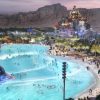
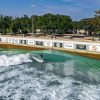
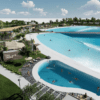
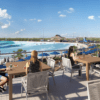
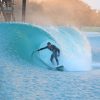
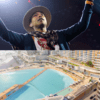
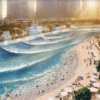
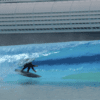
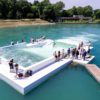


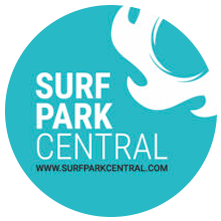



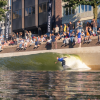
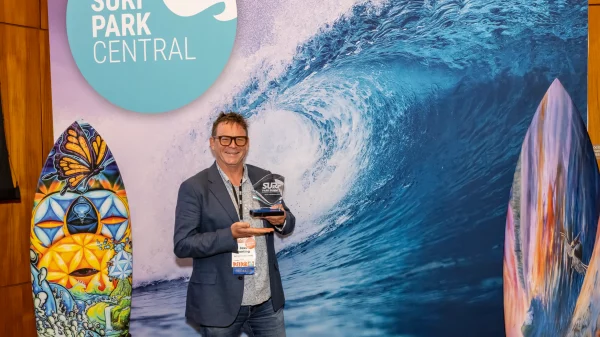
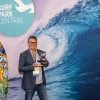


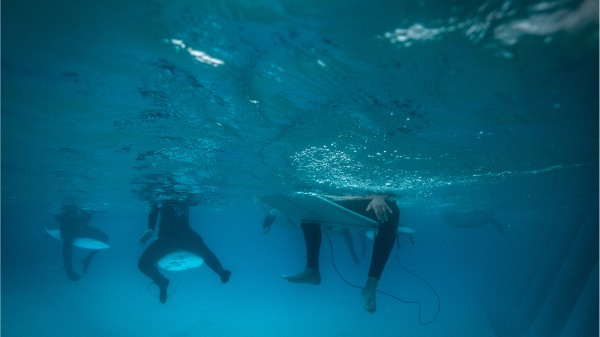
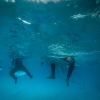
You must be logged in to post a comment Login